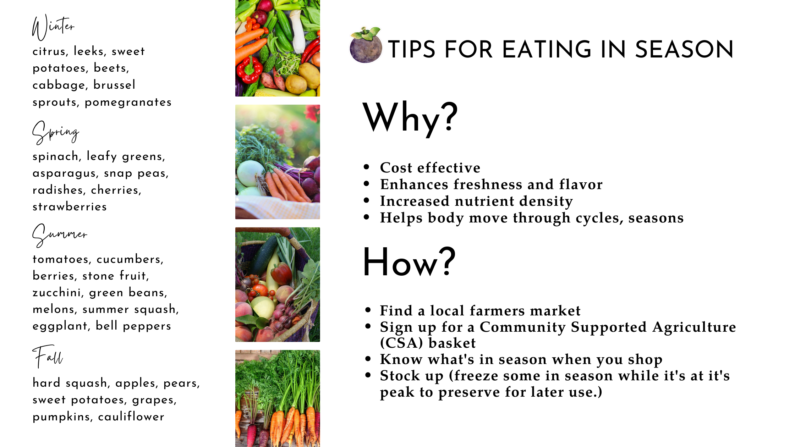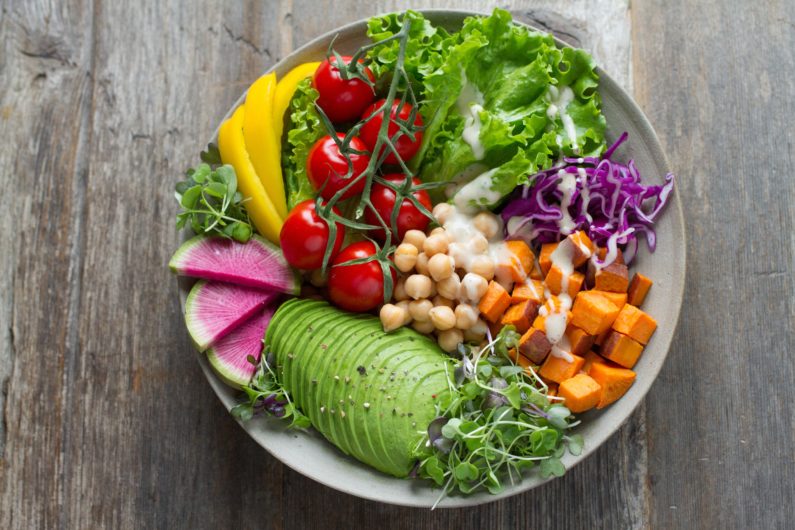Excerpt from IFM food plans which we offer in our nutrition practice:
“Eating a Wide Variety of Fresh, Delicious Foods is Good for Your Health
One benefit of eating locally and seasonally is that you are more likely to eat a broad variety of foods, some of which are unique to your city, state, or region. Eating these foods results in a greater diversity of phytonutrients, which are vital for cellular health and chronic disease prevention.”
Did you know that what we eat significantly impacts the balance of our gut microbiome. One of the most effective ways to support our gut health and overall well-being is by consuming a diet rich in fresh, seasonal produce. Eating fruits and vegetables that are in season can provide a multitude of benefits for both our digestive system and our overall health.
So, why exactly should we prioritize in-season produce? Let’s delve into the reasons and explore some expert tips to help you make the most of the bounty of seasonal foods available:
- Optimal Nutrient Content: Seasonal produce is typically harvested at its peak, meaning it contains the highest levels of essential vitamins, minerals, and antioxidants. These nutrients are vital for supporting a healthy gut lining and promoting a balanced gut microbiome.
- Enhanced Flavor and Texture: Fresh, in-season produce tends to be more flavorful and has better texture, making it more appealing to the palate. This can encourage you to eat a more diverse and nutrient-rich diet, which is beneficial for gut health.
- Cost-Effectiveness: Buying in-season produce can be more cost-effective as it’s more readily available, reducing the need for expensive transportation and storage costs. This can make it easier to include a variety of produce in your diet without straining your budget.
- Support for Local Farmers: Choosing in-season produce supports local farmers and the community. This not only fosters a stronger local economy but also ensures you’re getting the freshest, most nutritionally dense foods available.
- Environmental Impact: Eating in-season produce reduces the demand for out-of-season goods that often require significant resources for cultivation and transportation. By choosing local, seasonal options, you’re minimizing the carbon footprint associated with food production and transportation.
Now that you understand the importance of consuming in-season produce, here are some practical tips to help you incorporate more seasonal foods into your diet:
- Familiarize Yourself with the Seasons: Research what produce is in season in your region and create a seasonal eating guide for yourself and your clients.
- Visit Farmers Markets: Explore local farmers markets to discover a wide variety of fresh, seasonal produce options. Engage with farmers to learn more about their produce and farming practices.
- Experiment with New Recipes: Use seasonal produce as the focal point for creating new and exciting recipes. Experimenting with different cooking methods can help retain the nutrients and flavors of seasonal foods.
- Plan Your Meals Ahead: Plan your meals based on the seasonal produce available. This can help you incorporate a diverse range of nutrients into your diet and keep your gut microbiome thriving.
By embracing the concept of eating in-season produce, you can nourish your gut, support local communities, and contribute to a more sustainable food system. Make it a point to savor the flavors of each season and let your gut health flourish with every bite!
Imagine the color and taste of a fresh summer tomato, and contrast it to that of a tomato purchased in the winter. No contest, the summer tomato is far better, and likely less expensive.



Pingback: 10 ways to improve family nutrition – Nielsen Integrative Nutrition LLC